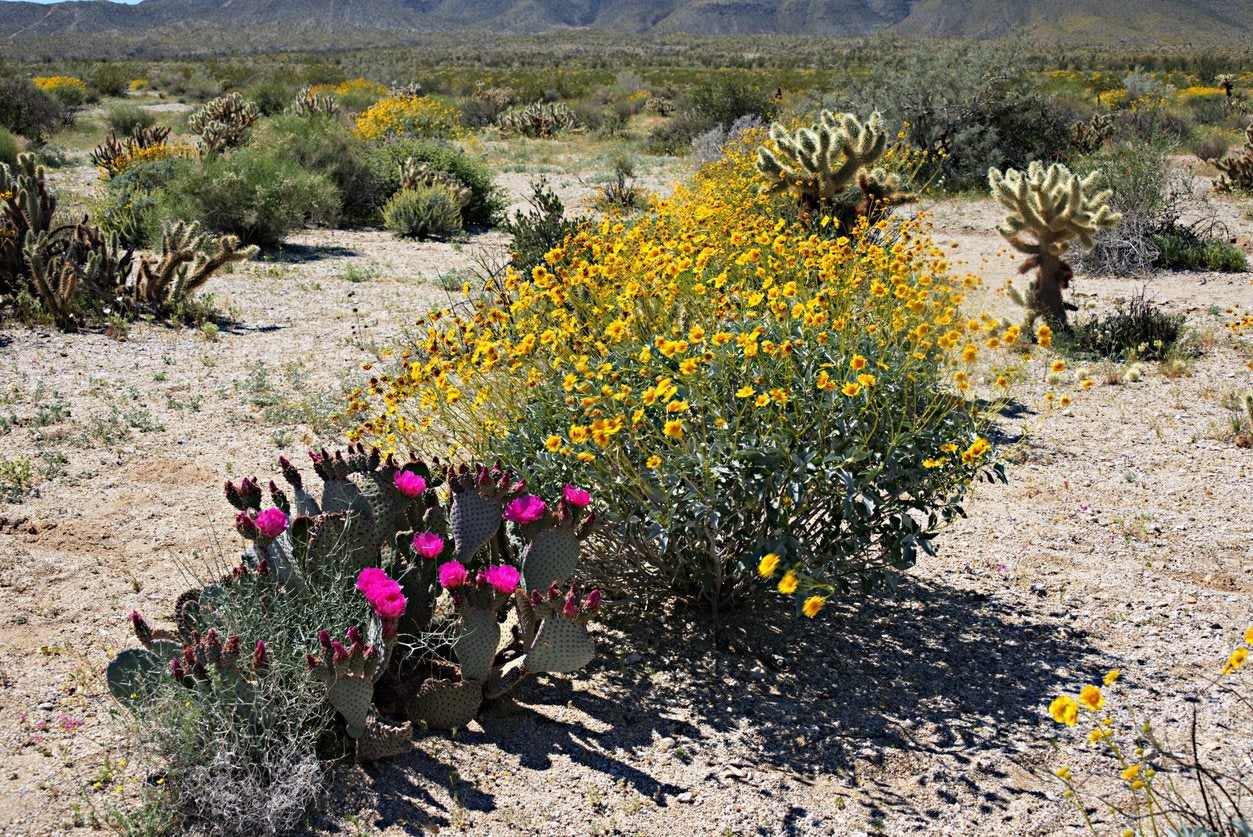Popular Desert Wildflowers – Tips On Growing Wildflowers In The Desert


Native, desert-dwelling wildflowers are hardy plants that have adapted to arid climates and extreme temperatures. If you can provide all that these wildflowers require in terms of temperature, soil, and moisture, there’s no reason you can’t grow desert wildflowers in your garden. Read on for more information about growing wildflowers in the desert.
Growing Wildflowers in the Desert
If you’re interested in growing wildflowers in the desert, or if you’d like to try your hand at xeriscaping with wildflowers, keep in mind that most desert wildflowers tolerate very warm days and won’t grow in cold temperatures. However, temperatures above 85 F. (29 C.) in late winter and early spring may scorch the seedlings. Desert wildflower plants are adaptable to poor, alkaline soil, but the soil must be well-drained. Loosen the top 1 inch (2.5 cm.) of soil before planting. Ensure the plants receive at least eight hours of sunlight per day. If the seeds are tiny, mix them with sand or old potting mix to help you distribute them evenly. Don’t cover seeds with more than 1/8 inch (3 mm.) of soil. Most desert wildflowers need a bit of rain throughout the winter in order to germinate, although too much moisture may rot the plants or wash the seeds away. Plant desert wildflower seeds directly in the garden in early spring when frost is still possible, or before the first hard freeze in fall. Once established, these wildflowers require minimal watering. The plants aren’t heavy feeders and no fertilizer is needed. Most desert wildflowers self-seed readily. Some, such as Blackfoot daisy and California poppy, are perennial. Remove wilted flowers to extend the blooming season.
Popular Wildflowers for Desert Climates
- California poppy
- Arizona poppy
- Blackfoot daisy
- Scarlet or red flax
- Desert plumbago
- Devil’s claw
- Blanket flower
- Desert lupine
- Arroyo lupine
- Desert marigold
- Evening primrose
- Mexican hat
- Penstemon
Gardening tips, videos, info and more delivered right to your inbox!
Sign up for the Gardening Know How newsletter today and receive a free copy of our e-book "How to Grow Delicious Tomatoes".

A Credentialed Garden Writer, Mary H. Dyer was with Gardening Know How in the very beginning, publishing articles as early as 2007.
-
 Moody Blooms For Spring: 8 Types Of Black Flowers To Add Drama To Spring Displays
Moody Blooms For Spring: 8 Types Of Black Flowers To Add Drama To Spring DisplaysFrom midnight burgundies to inky violets, several types of black flowers can enrich and embolden a spring display. Try these brooding bloomers for a moody garden
By Tonya Barnett
-
 Can Snake Plants Live Outside? Everything You Need To Know For Snake Plants Al Fresco
Can Snake Plants Live Outside? Everything You Need To Know For Snake Plants Al FrescoSnake plants can live outside given the right conditions, but be careful that they don't take over! Learn the best way to use snake plants in your landscape.
By Mary Ellen Ellis